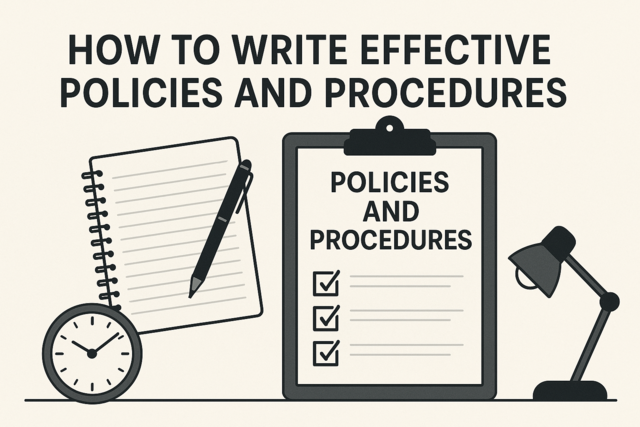Community development has been described as a process that is done to implement change. This suggests that there are a particular set of steps and requirements that a community needs to follow in order for their efforts to be successful. To some degree, this is true. There are certain things that need to be done in order for any actions to be taken within the community and for there to be any real results from them. However, the process isn't something that is completely set in stone due to the circumstances surrounding each community and social progressions that impact things. In a way, the community development process is more of a series of guidelines or a checklist that communities should consult as they make improvements. It can be adjusted as needed and still be successful, so long as the key principles are met.
This article will look at the community development process and the basic steps that a community should consider. Each of the steps discussed can be modified to fit the needs and goals of the community going through the practice. For the most part, the following is what needs to be addressed as changes are implemented through community development.
Collect And Analyze Data
No improvements can be made through community development if you have not identified what needs to be improved. To some degree, this might require more work than any other stage in the process. The size of the community, and the issues present in it, may mean that there is a lot of information to gather and sort through before taking action. Depending on how many people are involved in the community development process at this point, it could take some time to do so.
So how does one go about collecting and analyzing data for community development? Some methods can include:
- Learning-Take a look at the community and learn as much about it as possible. Familiarize yourself with what the details about the community, including the issues, needs, and resources available there.1 Some of this information can be obtained through simple observation and participation in the community; attend a local event, for example. It may also be documented through things like newspaper articles, reports, and social media.
- Get Feedback-When there's a problem in the community, people are going to be vocal about it in the hopes that something is done. This feedback can be incredibly valuable because not all of the information you obtain about the community is going to come through formal channels. Surveys, open forums, and even talking with your peers in the community are all good methods of getting honest feedback. So long as the dialog between development organizers and the community members remains open, information should be able to flow.
- Consider Motivations-Why are YOU choosing to take action to improve the community? Why is anyone doing so and why are they choosing now to do it? The motivations of those who are leading the process in a community often can be sources of information as members of the community. Perhaps they were directly impacted by the issues in the community, or they witnessed the effects first hand. Such information may not be found elsewhere and can provide a different perspective on the issues already identified.
- Compare and Contrast-Take the information about the community and compare it to what is known about other communities that lack those issues. The differences can help identify what is missing and what needs to be done, which can be helpful later on in the processes when actions need to be taken. The data can also go through a SWOT analysis-Strengths, Weaknesses, Opportunities, and Threats-to identify pertinent information and discrepancies in the data.2
Set Goals and Objectives
Using the information collected, determine what goals and objectives you seek to achieve through community development. These can be long-term, short-term, or whatever it is necessary to generate improvements. In the early stages of the process, it's best to set a few tentative goals for the community, as things can change as the process continues.3 Some things to consider as you set goals:
- Practicality-It's admirable to set an ambitious goal, but it can backfire if it isn't practical. In many cases where community development fails, the goals are unrealistic and the leaders lack a real understanding of the situation. This may be a result of visibility issues or a lack of information, but it could also be due to a misinterpretation of the data.4
- Time-Goals often have a deadline attached to them, which can provide some restrictions. There's only so much that can be done in a set amount of time and that will impact the fail/success rate for the community development process. Prioritize what needs to be done based on the demands of the community and any time constraints.5 It may be helpful to break up goals into stages that can be completed in batches over time, rather than one giant goal with a final deadline.
- Resources-The ability to meet goals on time will depend on what resources are needed to do so. This is one of the reasons why analysis of information is important, as it identifies what the community already has and what it needs. A goal can't be met if the community does not have the necessary resources to achieve it, or if they don't know what resources they need in the first place.
- Commitment-Goals can't really be achieved if no one is actively working on them. Community development's success is dependent on people being committed to doing the work that is needed; nothing's going to get done if they quit half-way through. The goals need to be something that the community is willing to commit to or little will be accomplished.
Address Options
Basically, once you know what it is you're trying to achieve and why, you need to consider how you're going to do it. Every community is going to have different options for the actions it can take for community development. Some are going to be better than others, depending on the circumstances. Not every available option is going to work, either, so it's best to address and consider each one in regard to what it is that the community wants to accomplish. Again, this is another step that is going to require some information analysis and collection in order to find the solutions that are going to fit best.
Determining what options are at your disposal requires a bit of research and brainstorming; look at the details of the community's issues and goals, as well as your available and needed resources. Weigh each option carefully and consider the different factors that can impact a particular action's effectiveness. Some of the same factors that affect the goals in the previous step, such as practicality and time, can also affect what actions and methods can be used. If there are too many factors working against an option, then it will most likely have a high possibility of failing-and possibly even cause additional problems that can worsen the situation. It may be necessary to consider back-up options, just in case, in addition to the primary actions and methods being planned.
Make A Written Plan
Once the details have been nailed down and smoothed out, they need to be written out into a comprehensive plan. Putting it in writing creates a record of it that can be referenced throughout the process and accessible to participants. The process is a rather long one and can continue until well after the goals have been met.6 Having a detailed written plan can help ensure that everyone involved is literally and figuratively on the same page.
The written plan can also serve as the formal documentation and collection for all of the information that has gone into the process thus far. It solidifies the reasoning that went into the actions being taken, which can help later on if an action is questioned. Citing the written plan may also be required if there's a need for formal application for resources, like grants and other funding-it's information that helps the sources of those things determine if the recipient is truly deserving of those resources and if they are going to use them responsibly. One community's community development plan can also serve as a reference for another community, so putting some genuine effort into the written plan can be beneficial to more than just its authors.
A formal written plan can be made by anyone involved in the process, but whomever does write it should have full access to all of the necessary information. If something changes during the earlier planning stages, then they need to know. For communities that are using professional services for their community development, keeping those that were hired in the loop can impact the overall costs of those services. Failing to inform such professionals can also lead to mistakes being included in the plan, leading to a ripple effect later on when action is actually taken.
Implementation
So you've decided upon what you're doing, why you're doing it, and how, and you have it formally laid out-it's time to take action! The implementation part of the community development process takes everything that has been done during planning and puts it into motion. It's a good idea to make sure that everything is ready to go before going ahead and acting. If there are elements missing-resources, funding, volunteers, etc.-then things are not going to go along as intended. This is why planning and preparation are key principles of community development and why they are so important to the process. Taking the time to make sure things are ready is going to help save time that may go to fixing mistakes once the implementation stage begins and is going to make it more effective for the community development process.7
During the implementation stage, actions should be monitored to make sure that they are having the intended effect(s). If something doesn't work, then you want to make sure that you catch it before it impacts future actions. Evaluating as you go may take up some additional time, but it will help ensure that things are progressing as intended. Monitoring will also assist in making sure that the plan is being followed as it should. Unexpected delays due to screw-ups or failure to do what needs to be done can result in a waste of resources, funding, and time. This can be especially important when there's a deadline in place or some kind of restriction or limitation involved. One solution would be to use the written plan made in the previous stage as a checklist for each task that is needed to implement the improvements and keep things on track. Breaking things down into stages or phases can also help; until everything is done in one phase, the next phase cannot begin.
Continued Progression
The community development process doesn't end when all of the goals are met and the last part of the plan is complete. Even the best community development plan isn't going to be self-sustaining-at least not from the start. In most cases, some degree of maintenance is going to be needed. This may mean that the entire community development process-or certain parts of it-is going to need to be repeated to keep things going. In this way, the process is a cycle that doesn't really have a true end.8
A cyclic community development plan isn't necessarily a bad thing. Being able to go back to an earlier stage means that there is always an option to fall back on when things go wrong. Circumstances change and new issues are bound to arise within the community that can lead to new problems. Society and the world are ever evolving and the communities that want to successfully exist in such a place need to have that flexibility if they want to survive.
























